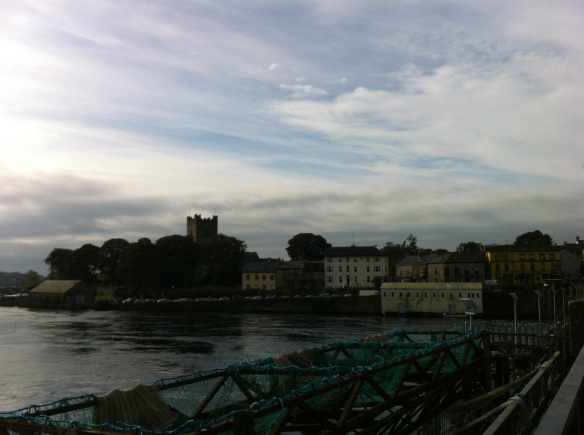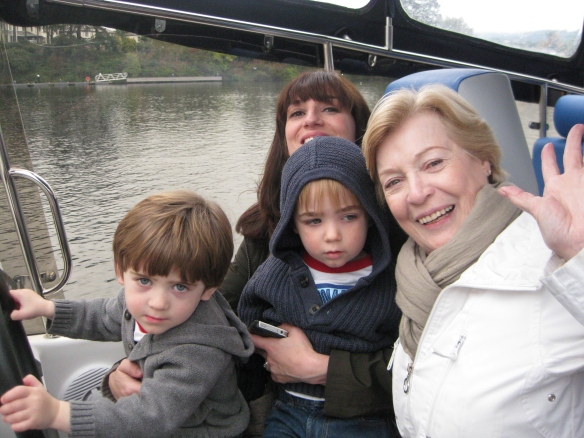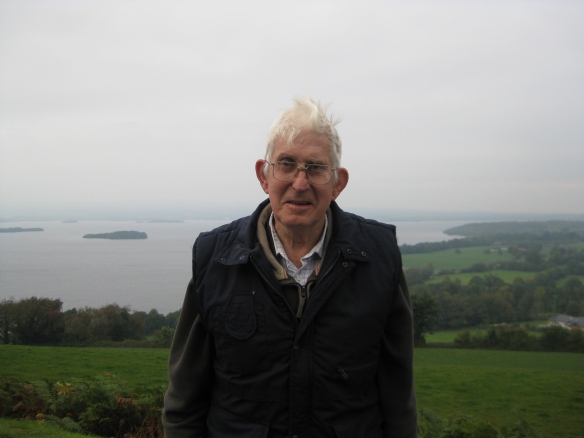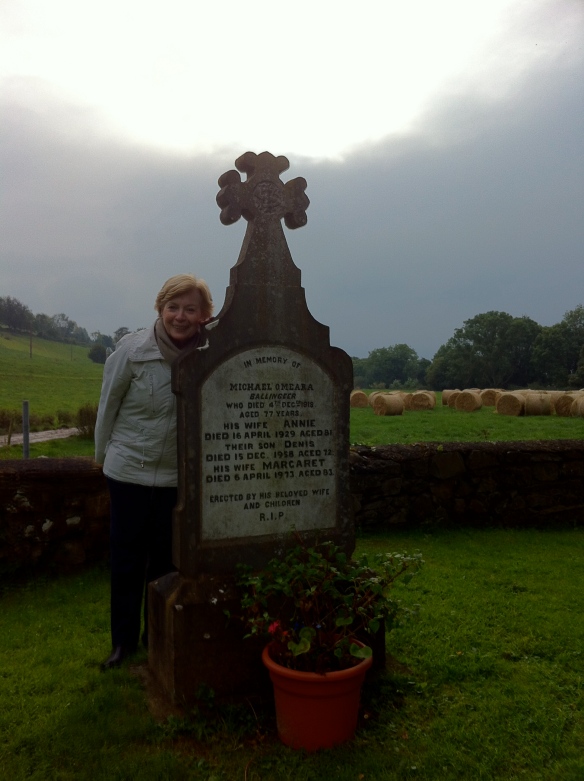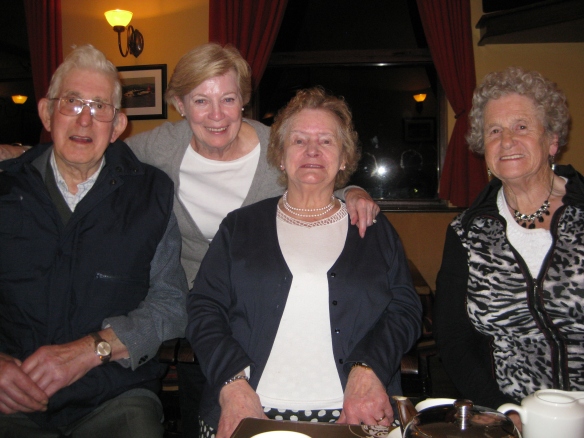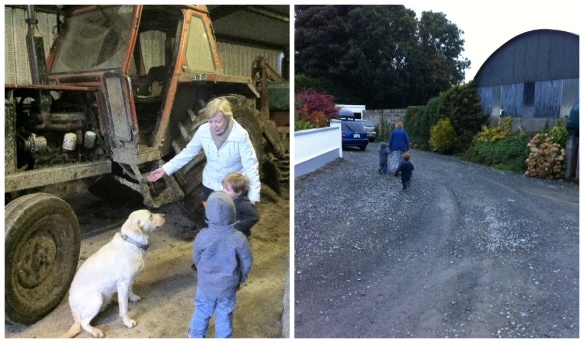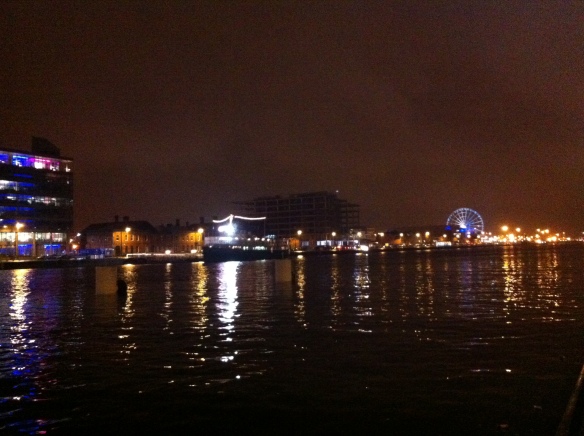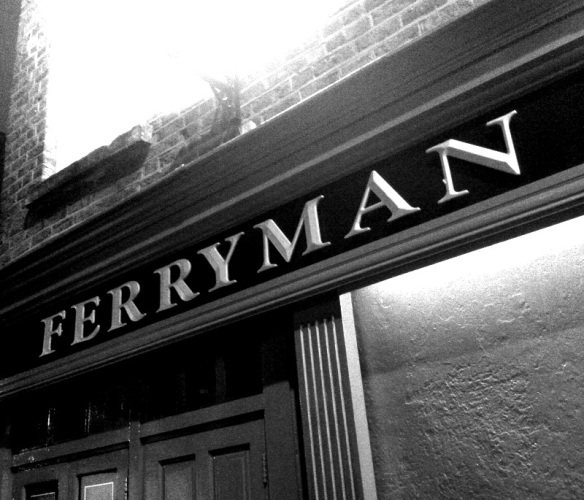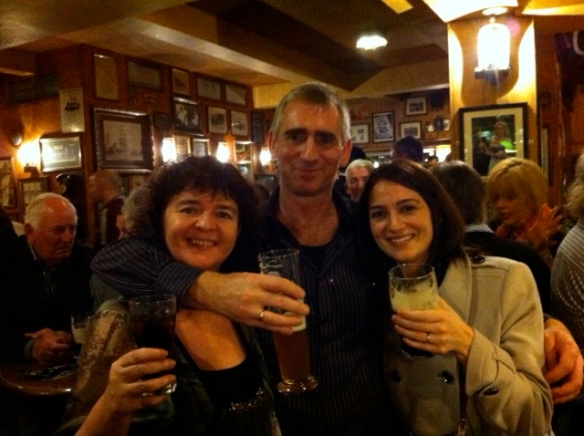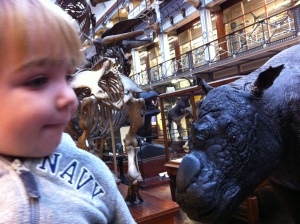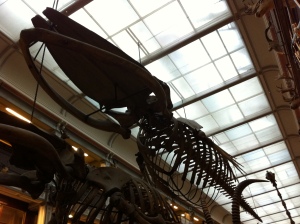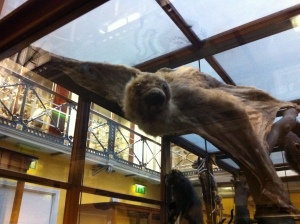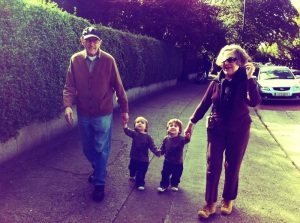My mother left yesterday, and again I am reminded why living abroad for all its excitement is hard. I am not sure when I will see her next. We had such a whirlwind visit of road trips and I wanted to write this post before autumn gets swallowed up by the holidays and it is the end of the year.
We have officially entered what I call “the drift:” the original term of Sascha’s contract is up, and yet we are still in Ireland for various reasons, mostly summed up as it is much easier to stay put until work forces the next relocation. Not that it’s a complaint. When I’m healthy, I love Ireland. It is an absolutely beautiful place to live and I know we are so lucky. It is complicated to be without a plan, but we have so many opportunities we might never have otherwise.
One of those opportunities was the chance to meet my late grandmother’s first cousin and family, who live about 2 hours from Dublin. So two weeks ago, when Sascha was in NYC and my mother was here, we packed up the Micra and strapped in the boys and hit the road to meet our Irish relatives.
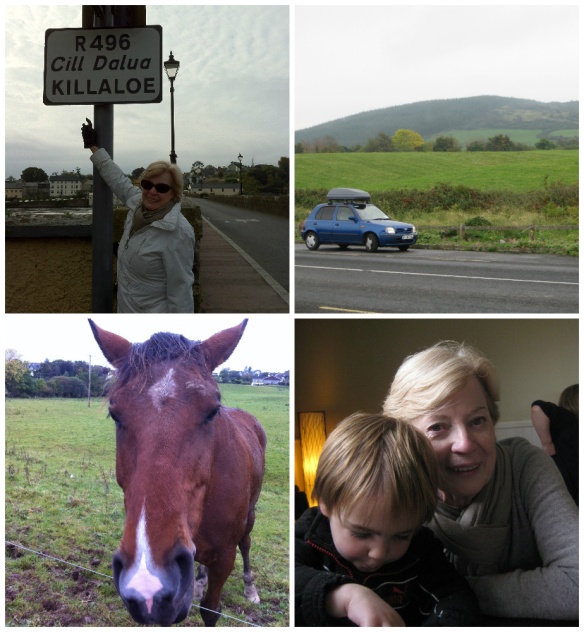
I don’t know if we would have gone to the Killaloe/Ballina area were it not for the family, but I am so glad we did. The area is rich in history, with Killaloe being the birth place of Brian Boru, the last high king. Killaloe and Ballina are villages opposite each other on the River Shannon, which forms a watery border between the counties of Tipperary and Clare. They are connected by a stone bridge, which is over 300 years old. I mostly have iPhone snaps, so the quality isn’t amazing compared to our new camera, but at least you have some idea.
The bridge is too narrow to allow two-way traffic so a light at either end regulates the flow. The river here is wider than the Liffey and it empties into Lough Derg, the biggest lake in the Republic of Ireland. Rimming the lake are the Slieve Bernagh Mountains (Co. Clare) and the Arra Mountains (Co. Tipperary).
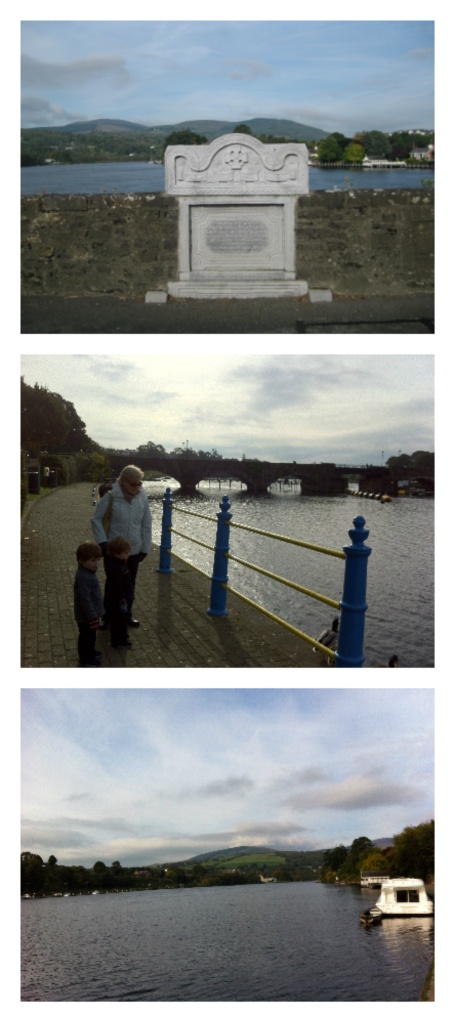
Top picture is a plaque on the bridge looking toward Lough Derg that commemorates four men shot by Auxiliaries in 1920. The middle picture shows Killaloe Bridge, with some of the original arches from over three hundred years ago.
We passed under the bridge on the boat tour. It being off-season, we were the only people on board, so James let the boys (and me) drive the boat. G really grabbed the wheel and enthusiastically turned it back and forth, so the boat fishtailed a bit. I actually got a bit nervous that while the captain took our photo G would run us aground.
We met Michael, his sister Nellie, and his wife, Nancy, at our hotel on our first night and then we made a plan to visit them at the farm the following day. My mother had not seen Michael and Nancy since the 70s, when they visited the U.S. before I was born. She remembers having them over for a barbecue but they didn’t want to eat corn on the cob. They called it “horse food.”
Apparently, after I went back to the room to put the boys to bed, my mom got excited about the potential for a secret smoke. Michael invited her out for a smoke, but she was disappointed to discover it was a pipe, not cigarettes. “Well, I’d’ve given you a pull or two,” he said.
Because the farm is not on the GPS, we were to meet Michael at a place called “The Lookout.” Around this vast lake, you might imagine there are many lookouts, and we spent some time driving on the wrong side of the lake before I figured it out. We did enjoy the unplanned tour of the Clare County side of Lough Derg and were grateful for Michael’s patience.
Michael took us down to the graveyard where his grandfather and father are buried. Over the years, it had been neglected and he and some other volunteers did a lot of work to restore the grounds and they even won awards for it. It is a beautiful and peaceful place, resting at the bottom of a graceful green slope to the shores of the lake.
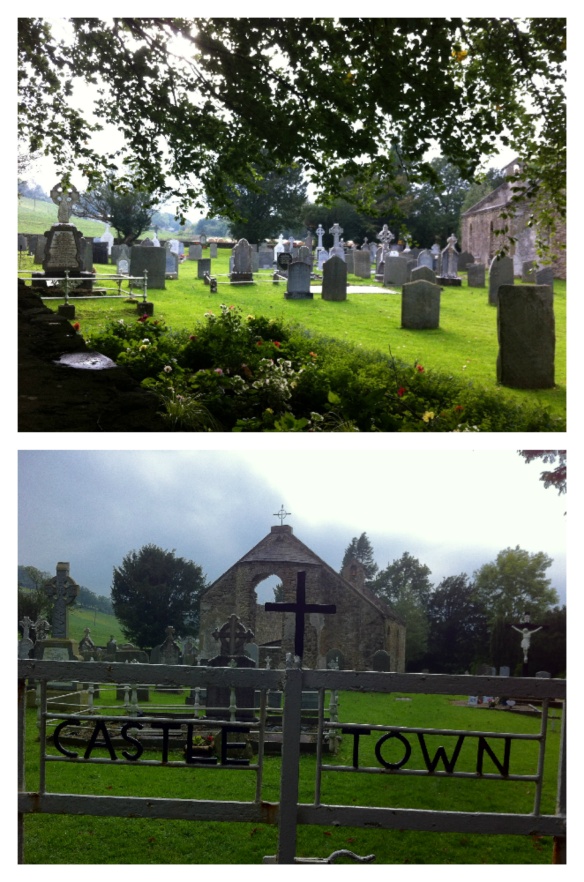
Nancy and some other women planted many of the flowers in the foreground of the first photo. Michael helped restore the ironwork on the church ruins.
After walking the wet grounds of the graveyard, everyone’s feet were soaked. At the house they had a fire going in the sitting room and we were happy to take our shoes off. Out in the country, Nancy says, it seems like things never really dry.
The house they live in is a new house built around the original two-room home where seven children were raised, including my great grandmother. Michael’s son now runs the thriving dairy farm.
I really enjoyed spending time with them.
“Oh to be young again,” Nancy said to me when I looked at her wedding photos. “Some years really make all the difference, don’t they?”
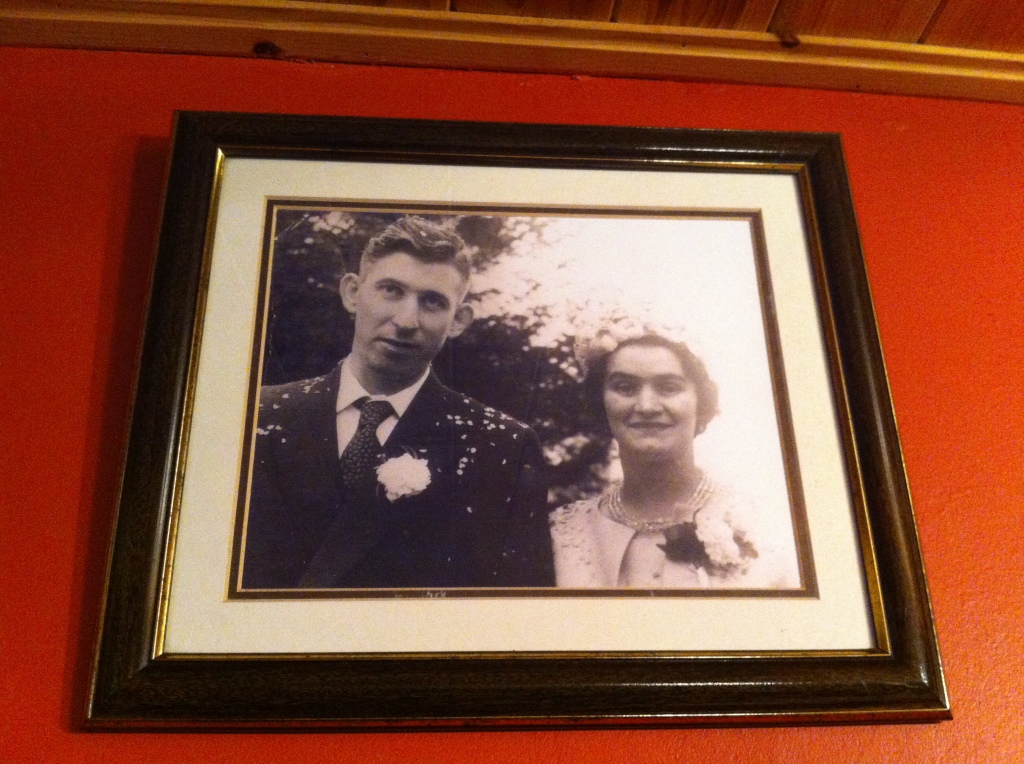
Michael and Nancy recently celebrated their 50th wedding anniversary. I love the confetti on his shoulder
Nancy told me she would have done things differently if she could go back.
Like what? I asked.
I would have traveled, she said.

